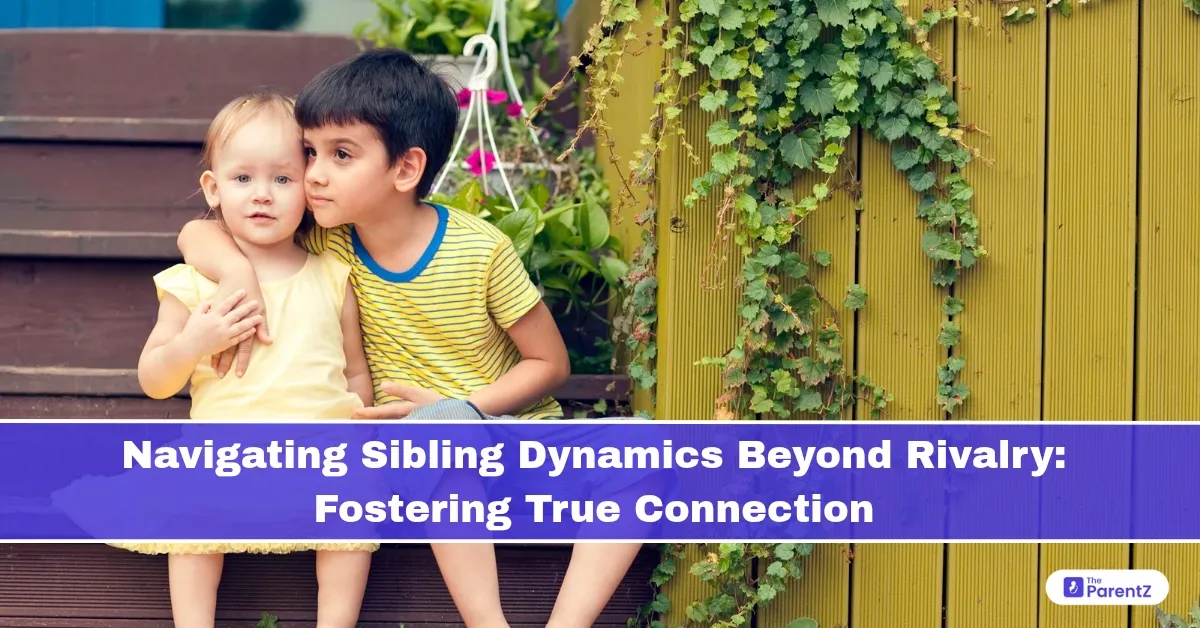Sibling relationships are among the most enduring bonds we experience, often outlasting friendships, jobs, and even marriages. Yet, they’re frequently characterized by rivalry, competition, and comparison—especially during the formative childhood years. While some conflict is inevitable and even healthy, constantly labeling sibling interactions through the lens of rivalry can obscure the deeper, more meaningful potential for connection that exists between brothers and sisters. The question isn’t how to eliminate rivalry altogether—it’s how to move beyond it.
Understanding the Root of Rivalry
Rivalry between siblings is rarely about direct hostility. More often, it’s a reflection of deeper emotional needs: the desire for validation, security, attention, or fairness. When one child perceives the other as getting more praise, more freedom, or more affection, it can ignite feelings of insecurity. This is especially common in households where achievement or obedience are strongly emphasized. Parents may not intend to compare, but small differences in treatment—like complimenting one child’s grades while criticizing another’s messy room—can leave lasting emotional imprints.
Reframing the Narrative
To move beyond rivalry, we must first shift the language and mindset with which we talk about sibling relationships. Instead of saying “They’re always competing,” consider reframing it as “They’re both trying to find their place.” This subtle change invites empathy, not judgment. When children are allowed to express themselves without being cast into roles—the “smart one,” the “troublemaker,” the “quiet one”—they feel seen as individuals, not adversaries.
Encouraging Shared Experiences, Not Comparisons
One powerful way to reduce rivalry and foster connection is through shared experiences that don’t hinge on performance. Collaborative tasks—like building a puzzle, cooking a meal, or caring for a pet together—can promote teamwork and cooperation without invoking competition. These moments allow siblings to see each other not as threats to parental affection, but as companions and allies. It’s important that these activities be low-stakes and inclusive, emphasizing joy rather than judgment.
Respecting Differences
Often, rivalry intensifies when siblings are expected to follow the same path or meet the same expectations. If one sibling is athletic and the other artistic, encouraging both to excel in their own arenas rather than forcing comparisons helps validate their unique strengths. Acknowledging and celebrating these differences reinforces the idea that love isn’t conditional upon success or sameness.
Teaching Emotional Intelligence
Helping children develop emotional awareness is key to navigating sibling dynamics. Encourage them to express frustration or jealousy in words rather than actions. When a younger child says, “I wish I was as good at drawing as my sister,” don’t dismiss it—acknowledge the feeling and open up a conversation. “It sounds like you really admire her. Would you like to draw together?” Empathy builds emotional bridges between siblings and teaches them to support each other rather than tear each other down.
Modeling Connection as Parents
Children absorb far more from our actions than our words. If parents handle conflict with empathy and avoid favoritism, siblings are more likely to emulate those behaviors. Let your children see you apologize, forgive, and support family members openly. Share stories about your own siblings—both the challenges and the growth—and model what it means to evolve beyond rivalry.
When Professional Support Helps
Sometimes, rivalry masks deeper issues—such as trauma, resentment, or feelings of abandonment—that require more than just parental guidance. If sibling conflict becomes aggressive, emotionally abusive, or constant, a family therapist can help untangle the roots of the problem and offer strategies for healing. Seeking help is not a failure; it’s a proactive step toward healthier family dynamics.
Building a Lifelong Bond
The ultimate goal is not to create a rivalry-free childhood, but to build a foundation of mutual respect and understanding that can evolve into adult friendship. Siblings are witnesses to each other’s lives, sharing memories and family history no one else can fully understand. By fostering open communication, celebrating individuality, and creating safe emotional spaces, we give siblings the tools to navigate their relationship with love rather than resentment.
Final Thoughts
Sibling relationships are complex, layered, and deeply emotional. Beyond the squabbles and comparisons lies an opportunity for one of life’s most profound connections. As parents, mentors, and caregivers, our role isn’t to referee every conflict—it’s to guide our children toward empathy, self-awareness, and genuine connection. Because when rivalry fades, what’s left can be something truly beautiful.








Be the first one to comment on this story.